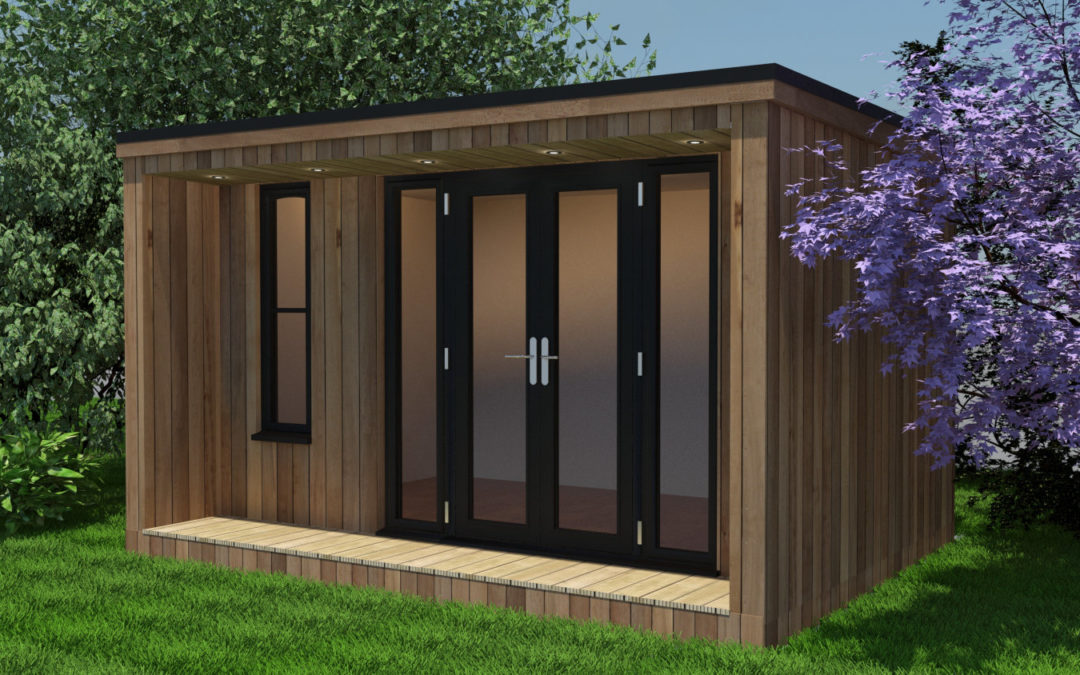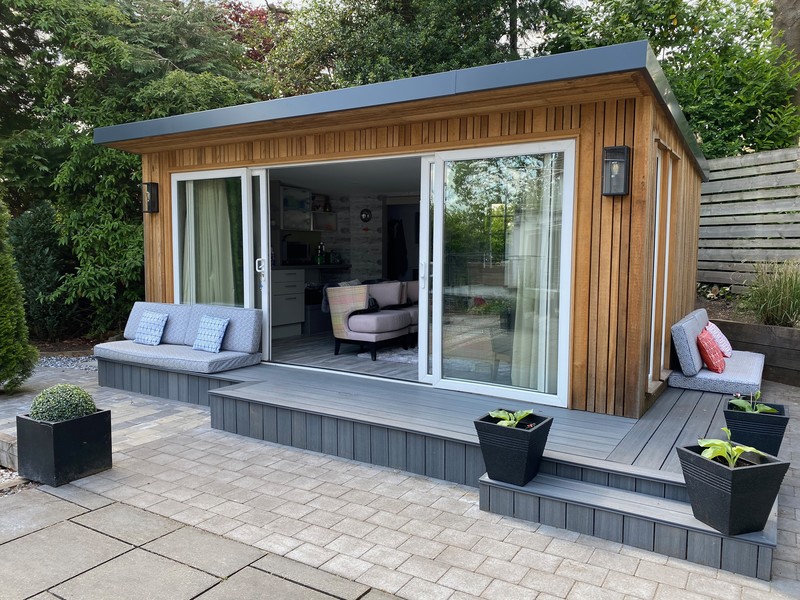Top Info For Planning Permission On Garden Summer Houses
Wiki Article
What Is The Planning Permission Required For Garden Rooms As Well As Other Modifications To The Use Of Space?
In determining if planning permission is needed for conservatories, garden rooms outhouses, garden offices and outhouses, or extension, "change of use" or "change of the purpose" is a crucial role. Planning permission is required for changes in usage.
In most instances the planning permit will be required to transform non-residential structures (such as agricultural structures) to residential areas or gardens offices. This is due to the fact that it requires a change in the use class of the structure.
Garden Rooms for Living Accommodation
The use of a garden room for a separate living space (e.g. as an apartment, guesthouse or any other similar arrangement) is a change in use. To ensure that the building is in compliance with rules and regulations for homes, planning permission will be required.
Utilization of Business
Planning permission could be needed when you plan to use the garden and conservatory, the extension or extension. to serve a business purpose (e.g. as an office within a home business with frequent guests as well as employees). This is due to the impact it could affect the neighborhood including noise, traffic and parking.
Educational or Community Use
The conversion of the space from a garden area to a community or educational space (such as a hall for meetings or classroom) requires approval from the planning department. The local authorities will consider the appropriateness of the area and its impact on the surrounding region.
Impact on Local Infrastructure
Any alteration in use that significantly impacts infrastructure in the local area (e.g. drainage, roads, and public services) will typically require planning permission. This will be evaluated by the local planning authority during the application process.
Dual Use
Properties that are going to be a mixed use (such as commercial or residential properties that are part-commercial and part-residential), planning permission is typically required to clearly define and regulate the different functions within the property.
Increased Footfall and Traffic:
Planning permission might be needed depending on whether the new use will likely increase pedestrian or vehicular traffic (e.g. the conversion of an unimportant garden space into retail space). This is in order to limit any possible impacts on the surrounding area.
Regulations for Building Regulations:
It is vital to keep in mind that while a change in usage is not required to obtain an official permission to plan, it should still comply with all construction codes and regulations. They are essential to protect people and their health and also for energy efficiency. This is especially relevant when it comes to conversions into habitable spaces.
Environmental Impact:
Changes in use that may impact the environment, such as changing agricultural land into residential development, require planning permission. The application might require an environmental assessment.
Impact of Community Amenities on Communities:
One of the most important aspects to consider is the impact of the project on the local population and its culture. Planning permission is required to transform a garden into a café for instance, in order to align it with the local plan and protect the amenities of the area.
Designated Zones
In areas designated as conservation zones, National Parks, or Areas of Outstanding Natural Beauty (AONB), changes of use are subject to stricter control to ensure the integrity and appearance of the region. In these instances, you need planning permission.
Local Planning Policy:
Local planning authorities may have policies that vary widely on the subject of changes to usage. You should consult these policies so you know what types of changes are permitted and what requirements need to be fulfilled.
For a brief overview the planning approval process is typically required for any major changes of the use of a garden room conservatory outhouses, garden offices or extensions. This is to ensure that the new usage is suitable for the location and is compatible with local and national policy on planning. Also, it addresses any possible impacts on the environment and community. To determine the exact requirements and obtain the necessary approvals, it is vital to talk with your local planning authorities prior to beginning planning. Check out the most popular black garden rooms for website recommendations including copyright garden rooms, Tring garden rooms, how to lay decking on soil, garden rooms, garden room conservatory, ground screws vs concrete base, composite garden rooms, outhouses, garden office hertfordshire, garden rooms near me and more.

How Tall Can You Build A Garden Room?
When constructing gardens, conservatories, outhouses, garden offices, or extensions, height restrictions determine whether permits for planning are required. Here are some of the most important guidelines for height that you must be aware of.
If the roof is dual-pitched (such as on the gable), then the maximum height of an detached extension or an outbuilding should not exceed four meters.
The maximum height for any other roofing type (flat or single pitched etc.) shouldn't exceed 3 meters. ) The maximum height must not exceed 3 meters.
Proximity to Boundaries:
If the building is located within 2 meters of the boundary of the property the maximum height of the structure must not exceed 2.5 meters. This rule applies to sheds, garden rooms and similar outbuildings.
Eaves Height
The maximum height of the eaves (the distance between the lower portion of the roof and the eaves) cannot exceed 2.5 meters for any building.
Extensions and conservatories:
The height of a rear extension with a single story can not exceed 4 metres. This includes the parapet as well as the roof.
Side Extensions
Extensions on the sides should not exceed 4 meters and not greater than 50% of the original size of the home.
Special Roofs:
Structures with a flat roof are usually restricted to a maximum height of 3 meters.
Additional limitations in specific areas:
In designated conservation zones, Areas of Outstanding Natural Beauty and other designated areas, there might be higher height limits and planning permission is required to build structures that would otherwise be permitted.
Buildings in National Parks:
National Parks can have height restrictions similar to those found in designated zones. Planning permission is necessary.
Roof Design:
It is important to consider the height (excluding chimneys, antennas, etc.). The height of the roof is to be taken into account. Planning permission is required if the height of the building exceeds the permitted development limits.
Neighbours affected
Even if a structure falls within the permitted height limit, planning permission may still be required if it significantly impacts the sunlight, privacy, or view of neighboring properties.
Maximum Height Overall:
The total height of a structure should not exceed 4 meters. For instance, a office in the garden with a roof that is double pitched should not exceed 4 meters at its highest point.
Decking, Platforms or Platforms
To avoid the requirement of approval for planning, decking or platforms that are part of the structure must not elevate the level of ground by more than 0.3 meters.
It is always recommended to inquire with your local planning authority to inquire about specific rules and recent changes to regulations. Even if a development is within the allowed rights of development, local modifications or special property conditions could necessitate obtaining permission to plan. Read the most popular copyright garden room for blog tips including garden room planning permission, composite garden rooms, best electric heater for cabin, outhouse uk, ground screws vs concrete, do i need planning permission for a garden room with toilet, ground screws vs concrete base, copyright outhouse, Tring garden rooms, how to get power to a garden room and more.

Limitations On Location: What Authorizations Are Required For Garden Rooms As Well As Other Structures?
If you are planning to construct garden rooms, conservatories, outhouses, garden extensions or offices, the location of your property plays a significant role in determining whether planning permission is required. Here are the major aspects to be considered when determining the location: Proximity of Boundaries
If the building is located within two meters of the property boundary, it must not have a maximum height exceeding 2.5 meters. If the building's height is higher than the limit, planning permission will be required.
Front of the Property:
The development rights granted by the permit do typically not allow extensions or forward-facing buildings.
The property's side:
Side extensions must comply with certain height and size limitations and require planning permission often if they exceed the existing wall of the sidewall.
The rear of the property:
Height and size limitations apply to rear extensions, which includes garden rooms. Planning permission may be required when the garden or extension rooms exceed the permitted development limits.
Designated Zones
Stricter controls apply in conservation zones, Areas of Outstanding Natural Beauty, National Parks and World Heritage Sites. Planning permission can be required for any new structure in any size.
Built in listed buildings:
Property that is listed as a building has strict guidelines. Planning permission is typically required for any new construction, modification or extension, regardless of the location of the property.
Green Belt Land:
In order to preserve open spaces, it's extremely difficult to construct on greenbelts. The construction of green belt land is restricted to protect open space.
Flood-prone Areas
Additional regulations could be in place depending on whether the property is located in an area that is susceptible to flooding. These are designed to keep the building of a building from creating more the risk of flooding. Planning permission and potentially an assessment of risk for flooding might be required.
Urban vs. Rural Settings:
Urban areas usually have different rules than rural ones. Rural areas may be more accommodating to the dimensions and locations of outbuildings. However, this may vary.
Highways and Public Rights of Way
The structure might require planning permission to ensure that it doesn't block views, access or safety if it is close to highways, roads or other public rights-of way.
Shared Ownership or Leasehold
If you have a home that is leasehold or part of a shared ownership scheme it may be necessary to get additional permission from the property owner or the managing entity. You may also need permission for planning based on the local laws.
Adjacent to other structures:
The building may require approval for planning to prevent negative effects on adjacent property or structures.
Always check with the local planning authority in order to receive specific advice specific to your home as well as its location and. The rules may differ depending on the local policies. In order to avoid legal problems it is important to comply with any restrictions applicable to your property. View the most popular small office pods for more examples including Tring garden rooms, garden room or extension, insulated garden rooms, outhouse, garden room or extension, composite garden rooms, insulated garden rooms, insulated garden rooms, what is a garden room, myouthouse and more.
